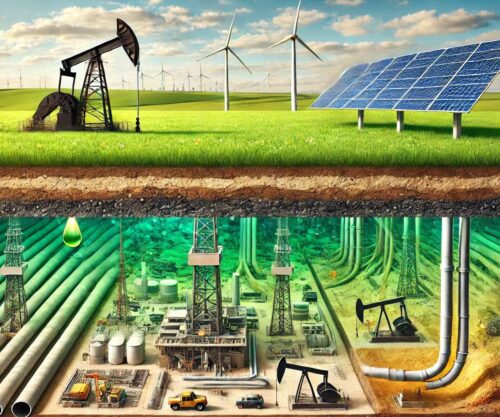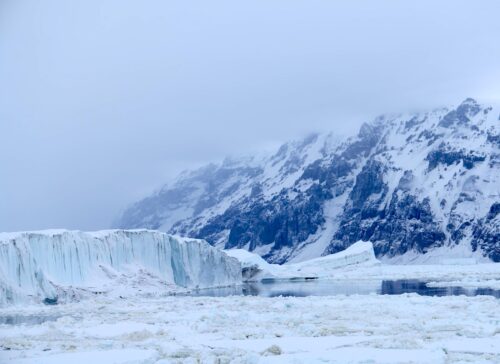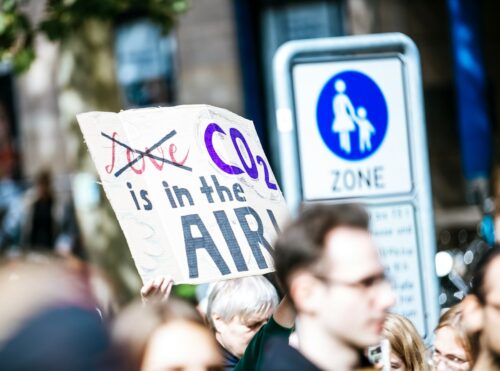 In 2019 the three most costly catastrophes were the consequence of tropical cyclones, according to the reinsurance company Munich Re.
In 2019 the three most costly catastrophes were the consequence of tropical cyclones, according to the reinsurance company Munich Re.
Typhoons Hagibis [pictured] and Faxai struck Japan, together causing more than $26 billion in losses and Typhoon Lekima caused more than $8 billion in losses across Asia.
Tropical cyclones, which are called hurricanes in the Atlantic and eastern Pacific between Hawaii and Mexico, are historically responsible for the greatest amount of damage among weather and climate-related events.
Understanding the behavior of tropical cyclones on planet earth is thus a priority among scientists, and includes attention to short-term forecasting and long-term climate trends.
The storms that cause the most risk to human life and property damage are those that make landfall, technically defined as occurring when the eye of a tropical cyclone passes over the coastline.
Storms with winds of at least 74 miles-per-hour (119 kilometers-per-hour) are classified as hurricane strength, and those with winds of 111 miles-per-hour (178 kilometers-per-hour) or greater are classified as major hurricane strength.
Overall, on planet Earth each year, there are about 45 tropical cyclones that reach hurricane strength and about one-third of those go on to make landfall. Of those 45 storms, about 25 storms reach major hurricane strength and 5 of them, on average, go on to make landfall.
Almost a decade ago we realized that the scientific community had never developed a historical time series of tropical cyclones that made landfall around the world.
So along with Jessica Weinkle, today a professor at the University of North Carolina-Wilmington, we used datasets available around the world on tropical cyclones to create a historical record of storms of at least hurricane strength that make landfall.
Last year, we were asked by a group of scientists affiliated with the World Meteorological Organization to update our analysis.
Today we can share with you a preliminary further update, as part of our work in progress (Caveat Lector!) to develop a new and improved analysis of landfalling tropical cyclones.
Our updated analysis is made possible by the data of the project on the International Best Track Archive for Climate Stewardship (Version 4).
We are grateful to the governments that support this work and the scientists who conduct the analyses.
Note that global data prior to 1985 have larger uncertainties, but landfalls that have occurred during the satellite era of observations are highly unlikely to have been missed.
Even so, the further back in time, the greater the chances are that our figures are underestimates.
Comprehensive data on landfalling tropical cyclones in ocean basins around the world are available since 1970.
Defining landfall can be tricky – for instance, sometimes storms come very close to the coast but do not actually make landfall and our methods do not include all small islands (and for all of the specific and technical details of our methods, please see our paper).
The graph below shows 50 years of global landfalls of tropical cyclones of hurricane strength, based on the Saffir-Simpson hurricane scale use by the U.S. National Oceanic and Atmospheric Administration.

There are a lot of ups and downs in the data, but no obvious trends. Last year saw 17 total storms, with seven making landfall as major hurricanes.
Every landfalling hurricane poses significant risks to life and property, but the major hurricanes are responsible for the most damage.
Of course, tropical cyclones, even those that never reach hurricane strength, can also create massive damage through heavy rains and flooding.
Here are some summary statistics on landfalling hurricanes from 1970 to 2019:
- All landfalls: 15 (median), 15.4 (average), 4.3 (sd)
- Categories 1 & 2 at landfall: 10, 10.4, 3.7
- Category 3+ at landfall: 5, 5.0, 2.6
- Most total landfalls in one year: 30 (1971)
- Fewest total landfalls in one year: 7 (1978)
- Most Category 3+ landfalls in one year: 11, (2015)
- Fewest Category 3+ landfalls in one year: 0 (1981)
- Most total landfalls over a 10-year period: 177 (1988-1997)
- Fewest total landfalls over a 10-year period: 120 (1975-1984)
- Total landfalls 2010-2019: 148
- Most Category 3+ landfalls over a 10-year period: 65 (1999-2008)
- Fewest Category 3+ landfalls over a 10-year period: 33 (1972-1981 and 1978-1987)
- Total Category 3+ landfalls 2010-2019: 60
- Total landfalls 1970-2019: 772, (520 were Categories 1 & 2, 252 were Category 3+)
It is well known that the 1970s were a relatively quieter period for tropical cyclones overall as compared to the 1990s, and parts of recent decades.
With our data, we can say a bit more about longer-term trends because reliable records of tropical cyclone landfalls in the North Atlantic and the Western North Pacific are available farther back in time (to at least 1900 and 1950 respectively).
Landfalls in these two basins account for about 68% of all global landfalls from 1970 to 2019.
The figure below shows a 10-year moving average of tropical cyclone global landfalls from 1950 to 2019. The period from 1970 to 2019 is based on observations and uses data identical to the graph above.

The black line shows all tropical cyclone landfalls of at least hurricane strength and the dashed black line shows all landfalls of tropical cyclones of major hurricane strength.
For the period 1950 to 1969, we have used actual data on landfalls in the North Atlantic and Northwest Pacific and added to that the average number of landfalls from the rest of the world based on observations from 1970 to 2019 (there is no trend over this period).
The grey line and dashed line represent an estimate of, respectively, total hurricane-strength and major hurricane-strength tropical cyclone landfalls from 1950 to 1969.
The dotted lines represent plus and minus one standard deviation from this average.
These data help to illustrate why it is so challenging to identify trends in tropical cyclones, even over periods of 50 years or more.
Over the most recent 50 years, the decadal minimum worldwide was 120 landfalling storms of hurricane strength (1974 to 1983) and the landfalling maximum was 177 (1988 to 1997), a difference of almost 50% from smallest to highest (which happened over a total period of just 25 years).
For tropical cyclones of major hurricane strength, the decadal variability is even larger, with the fewest at 33 (twice) and the most at 65 (1999-2008), or almost a 100% difference.
Within individual ocean basins around the world, there is also extremely large variability in the occurrence of tropical cyclones.
That large variability in occurrence means – as a simple matter of mathematics – that our ability to detect changes in tropical cyclones one or two magnitudes smaller (or more) on similar time scales is obviously made difficult, if not impossible.
Fortunately, the scientific community has much more data on tropical cyclones than just that involving landfalling storms. Such data have been used to dramatically improve forecasts, warnings, and emergency response.
Improved societal outcomes with respect to tropical cyclones are a tremendous success story of recent decades.
With respect to longer-term climate changes, the Intergovernmental Panel on Climate Change, U.S. National Climate Assessment and most recently the World Meteorological Organization have surveyed the scientific literature and produced assessments of what can be said about historical climate and projections of the future.
Nothing presented here contradicts those assessments (and actually, our work is even included in them).
We have no doubt that battles over the science of tropical cyclones will continue to feature in the climate debate. We also have no expectation that these battles will be resolved soon.
Fortunately, we have good data and good science to help inform decisions to help prepare for and respond to these monster storms, no matter how the future plays out.
Consequently, we have every expectation that using this knowledge, the world is well poised to continue its notable progress of improving responses to tropical cyclones that have been seen in recent decades.
Roger Pielke Jr. has been a professor at the University of Colorado since 2001. Previously, he was a staff scientist in the Environmental and Societal Impacts Group of the National Center for Atmospheric Research. He has degrees in mathematics, public policy, and political science, and is the author of numerous books. (Amazon).
Note: This column was co-authored by atmospheric scientist Ryan Maue, @RyanMaue
Read more at Forbes Blogs



















It is an absolute guarantee that the data presented in this report will be ignored. It doesn’t support the climate change agenda. It is pretty obvious that there is no long term trend. This is what the IPCC said in their fifth assessment report.